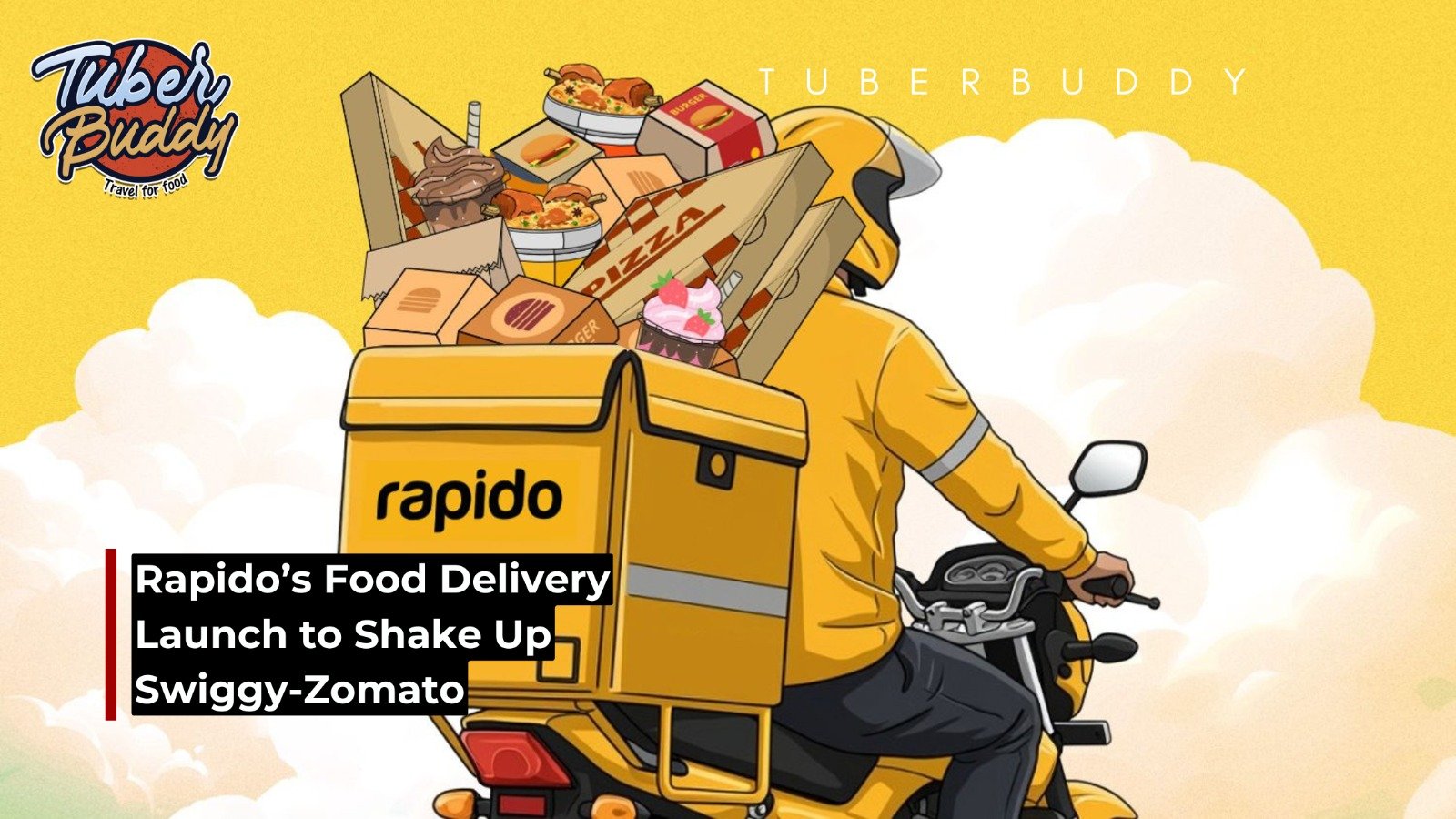Rapido’s Food Delivery Launch to Shake Up Swiggy-Zomato

India’s food delivery ecosystem is on the verge of a major shake-up. Rapido, best known for its extensive network of bike taxis, is preparing to enter the food delivery market in late June or early July 2025, starting with Bengaluru. With an aggressive, low-cost model and a fresh approach to commissions, Rapido’s new offering is poised to challenge the long-standing duopoly of Swiggy and Zomato.
But what makes Rapido’s entry so compelling—and could it truly disrupt the existing giants?
The New Model: Affordable, Transparent, and Empowering
Rapido is launching its food delivery service with a focus on affordability and ease of use. Unlike Swiggy and Zomato, which often add layers of platform fees, packaging costs, and variable commissions, Rapido is taking a different route:
No packaging cost or platform fee for consumers
Flat delivery charges: ₹20 for orders below ₹100, and ₹25 for orders above ₹150
Rapido ensures transparency by offering restaurant menu prices without any hidden charges.
Low commission rates of only 8–15% from restaurant partners
Zero commission for partner restaurants initially
This pricing transparency could be a game-changer in a market where customers often pay significantly more than the actual dish value due to added fees. For small restaurants, this model offers a chance to boost visibility and profitability without the pressure of high commissions.
Powered by a Massive Fleet
Rapido is leveraging its already massive network of over 4 million rider-partners across India—called “captains”—to serve food delivery needs. This gives the company an edge in operational logistics, allowing it to scale quickly and manage delivery costs efficiently. Since these riders are already familiar with hyperlocal routes and traffic conditions, the transition into food delivery could be smoother and more agile than one might expect from a new entrant.
Fuelled by Fresh Capital and Tech Focus
Backed by a ₹125 crore investment from Nexus Venture Partners, Rapido’s food delivery platform is getting a strong financial boost to scale operations and refine technology. The app-OWNLY model will help streamline customer experiences while allowing the company to control the quality and delivery logistics better. With rapid expansion planned across metro cities, this new vertical could soon become a substantial pillar of Rapido’s growing brand identity.
Empowering Small Restaurants and Local Kitchens
One of the biggest criticisms of the current food delivery giants is the high commission model that leaves smaller restaurants struggling to turn a profit. Rapido is positioning itself as a champion of small businesses by offering low and fixed commission rates and eliminating platform fees during the initial phase.
This is especially promising for cloud kitchens, local food joints, and home chefs looking to grow without the burden of high operational costs. For the first time, these small-scale players might find a platform that prioritizes their growth.
Can Rapido Break the Swiggy-Zomato Duopoly?
Swiggy and Zomato have enjoyed near-monopolistic control over India’s food delivery scene for years. Both platforms have matured, offering subscription models, loyalty programs, and grocery delivery to retain user engagement. However, this expansion has come with growing consumer dissatisfaction over increasing delivery fees, inflated restaurant pricing on apps, and declining customer service quality.
Here’s how Rapido’s arrival could impact them:
Price pressure: With Rapido undercutting delivery fees, Swiggy and Zomato may be forced to reevaluate their pricing models to retain their price-sensitive users.
Better deals for restaurants: If Rapido’s low-commission model proves viable, restaurants may begin to list exclusively or primarily on Rapido, forcing existing platforms to rethink their commission structures.
Increased competition in Tier 2/3 cities: While initial operations begin in Bengaluru, Rapido has a strong presence in Tier 2 and Tier 3 cities through its bike taxi service. Its existing network can easily be leveraged for food delivery in these markets, putting pressure on Swiggy and Zomato in regions they’re just beginning to penetrate.
Potential for customer loyalty shifts: Rapido’s transparent pricing and no hidden charges could attract users tired of surprise fees and poor value.
A New Chapter in India’s Food-Tech Space
While it’s too early to predict the outcome, one thing is certain—Rapido’s entry marks a bold and much-needed shift in the Indian food delivery space. By focusing on affordability, fairness, and small business empowerment, the company is addressing key pain points that have long plagued both consumers and restaurant partners.
If executed well, Rapido could become not just a disruptor but a sustainable alternative in the ecosystem. For the everyday food lover, this means more choice, better value, and the chance to support local eateries—one order at a time.
Want to know what’s happening around you Follow TuberBuddy for the hottest Updates!
